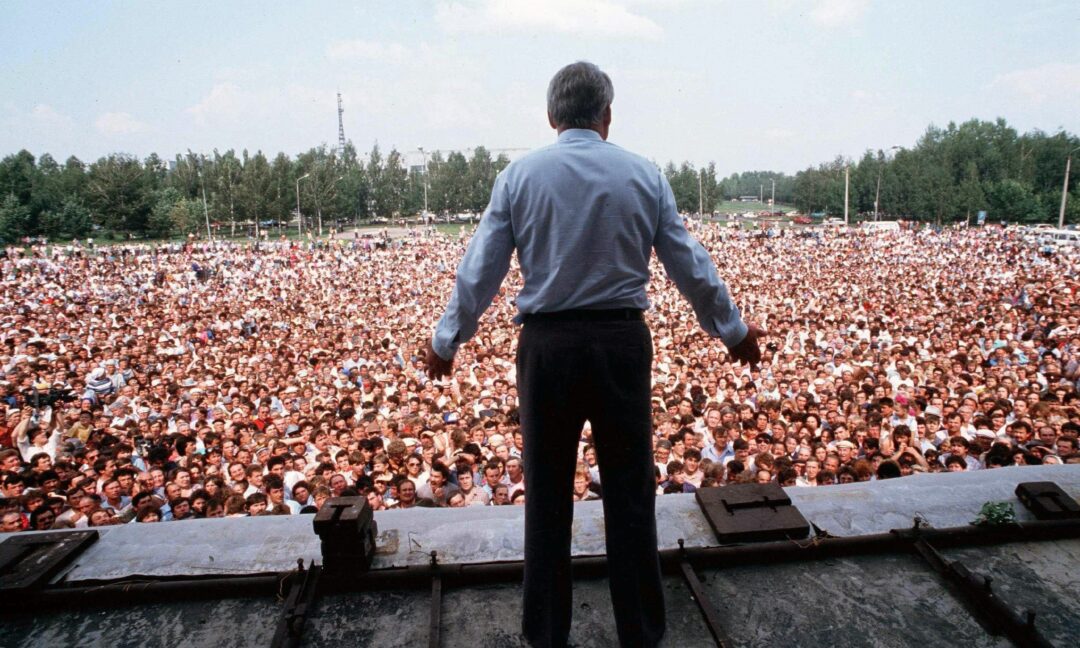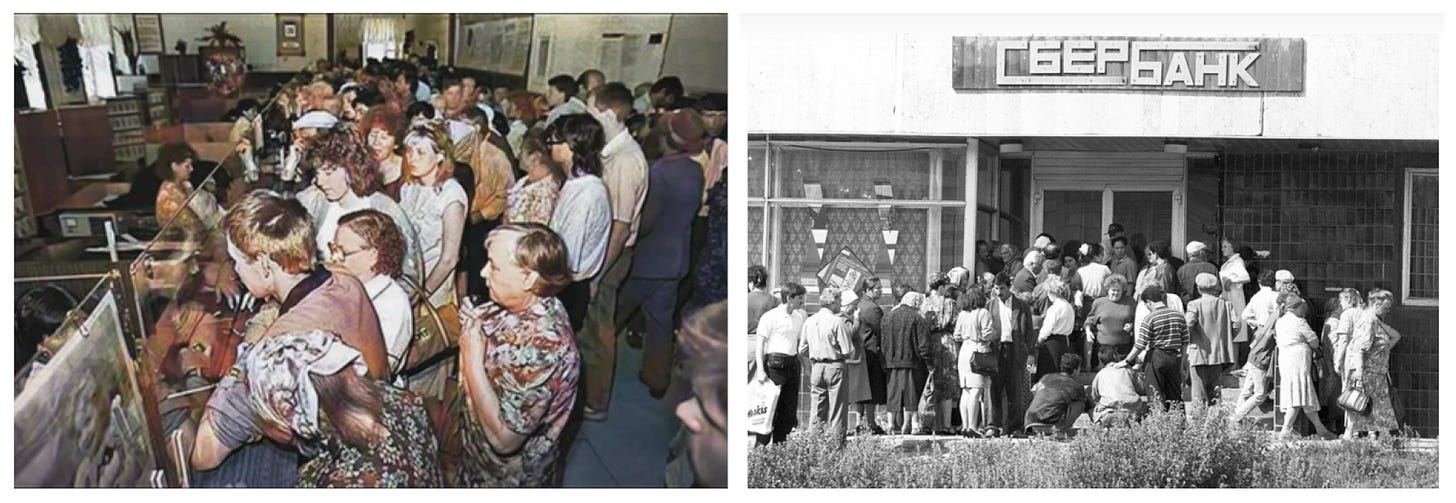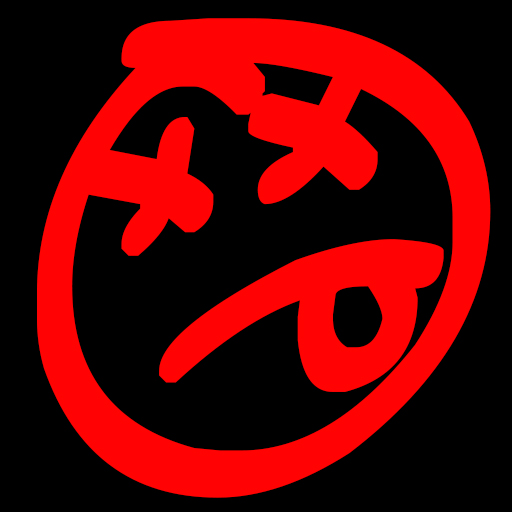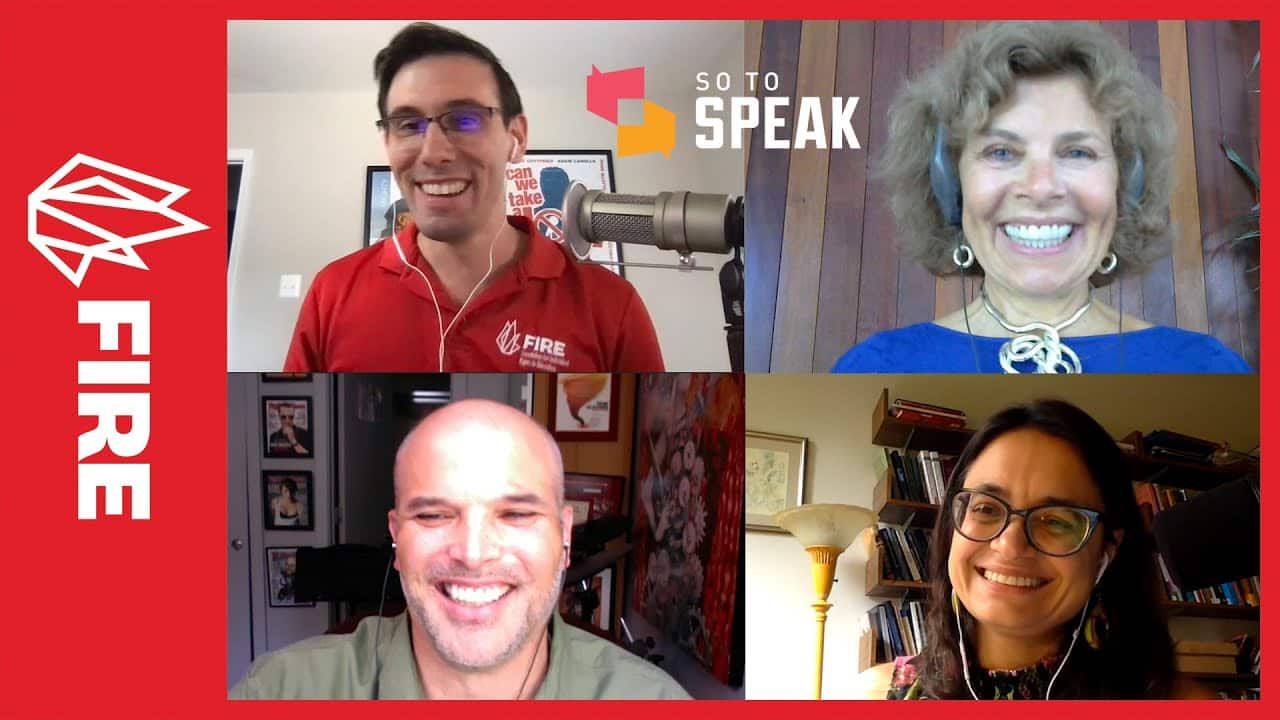

Boris Yeltsin in arctic Vorkuta, 1990. Striking miners helped him bring down the Soviet Union. Eight years later, I watched them go on strike against his government.
What I Got Wrong About “Shock Therapy”
by Matt Taibbi | Sep 4, 2024
In Moscow on the morning of July 24th, 1993 I fixed a cup of tea, rubbed the hangover out of my eyes, and walked out to look for breakfast. I was living then above the Metro station at VDNKh, the ex-Soviet equivalent maybe of New York’s World’s Fair grounds, and saw right away something was wrong. Old women on the street were bawling, a group of men was shouting at a beat cop, and sidewalks were full of people walking in a daze, as if a neutron bomb had gone off.
The government of Boris Yeltsin had decreed it was withdrawing all old rubles from circulation. Russians who’d stuffed rubles in mattresses for decades would be wiped out, unless they could fight through huge bank lines to exchange bills. Worse, the maximum amount was 35,000 rubles, or roughly $30-$35, about 60% of a Russian’s average monthly salary of 58,700 rubles. Those who exchanged the full 35,000 had passports stamped barring all future exchanges. I’ll never forget seeing a burly woman yelling, to no one in particular: “Vori, blyad!” (“Fucking thieves!”).
“Black Saturday” is remembered as a breaking point in the arc of post-Soviet history, the moment when many Russians stopped believing a glorious new democratic future was just around the corner, if it was coming at all. A week or so after the event, on August 6th, 1993, then-Prime Minister Viktor Chernomyrdin burned his name in the nation’s history books. An aphorism-spewing figure whose unique place in Russian lore is like a cross of Yogi Berra and Spiro Agnew, Chernomyrdin said one of the most purely Russian things of all time: “Hoped for better, turned out as always.”

Lines after “Black Saturday”
With inflation above 2500% the previous year of 1992, Russia was beginning a long period of economic suffering that wouldn’t hit climax until 1998, when the country defaulted and plunged into a crisis presaging the rise of Vladimir Putin. It’s hard to describe the disaster of the nineties in terms that will make sense to Americans. Life expectancy for men dropped seven years almost overnight, from 64 in 1990 to 57 in 1994. Deaths from disease doubled. An already heavy-drinking country saw alcoholism rise by 60%. The Lancet estimated Russia that decade saw seven million “excess deaths,” whatever that means. I know what it looked like: mass poverty, spiraling crime, and sharply rising levels of fury toward the West, largely seen as a primary culprit in designing Russia’s crony-capitalist hellscape.
Harvard economist Jeffrey Sachs, whose ideas for quickly transforming communist economies to market-based systems were dubbed “shock therapy,” saw his name become synonymous with pain. Though he’d overseen successful reforms in a similar situation in Poland, fellow Harvard acolytes Yegor Gaidar and Anatoly Chubais had a lot less luck when appointed economic czars in Boris Yeltsin’s Russia. Russians early on associated “shock therapy” with inflation and the abrupt removal of safety nets they’d grown used to in Soviet times (though residents were awarded their apartments as property, and kept a few other important subsidies like cheap home energy). Loss of access to good medical care was a particular problem in the new paradise. I wish I’d taken a picture, but I remember seeing graffiti on an apartment building when visiting the Arctic mining town of Vorkuta during the 1998 crisis. It read, ФОК ТЕРАПИЯ: “Fuck Therapy.”
Now, on a day the Biden administration is leveling sanctions over the unkillable Russiagate hoax for the umpteenth time, Sachs has come forward with a new account that suggests the U.S. never wanted to lose Russia as an enemy:
I worked as a journalist for the Moscow Times from the early nineties until roughly 1996 and then at my own newspaper, the eXile, through the end of the decade. Though I never wrote about Sachs, I did extensively cover Gaidar and Chubais (members of a group of Western-educated neoliberal politicians derisively tabbed the “energetic young reformers”). I also wrote exposés about a pair of Harvard economists who technically served under Sachs and helped design Russia’s infamous privatization schemes. These policies handed vast industrial properties to a handful of new oligarch pals of Yeltsin for pennies and were so grotesquely theft-ridden, Russians changed the very word, privatization. They called it prikhvatizatsia, or “grabitization.”
At the eXile, I spent years traveling Russia working various jobs, trying to document what the New York Times called Russia’s “costly and painful, if good, progressive and necessary” transition to capitalism. I saw nothing that resembled capitalism or democracy in my travels. Competition was managed by politicians who doled out zones of commercial operation like racketeers, there was no labor presence (anyone trying to organize in an oligarch-owned business got a bullet in the ear), workers were often paid in products or chits for company-owned commissaries, and assassination was the country’s only functioning regulatory mechanism. This was a mafia state, with the president as the Don, not a capitalist “democracy.”
Even farms, like the Siberian ranch where I stayed one night with an elderly watchman as he waited for trucks full of city horse thieves, had become gangland territories. From oil to booze to watermelons, every industry was owned by gangsters.
I thought it was intentional: Harvard economists designed mass privatizations creating oligarchs overnight, oligarchs funded Boris Yeltsin’s election campaigns, and Yeltsin allowed American-trained politicians to run his government. Essentially, we helped Yeltsin rob his people so that we could have a co-pilot seat in a conquered vassal state. I was criticized for writing it that way back then, but eventually this became conventional wisdom. Naomi Klein’s Shock Doctrine blamed Sachs and America for imposing what she said was “free trade and democracy… [imposed] with Shock and Awe military force.” Klein cited Russia as just another in a long line of countries where “economic shock therapy” was applied “without restraint” through “fire-sale privatizations” that created “the country’s notorious oligarchs.”
The more time I spent looking at U.S. economic policy toward Russia, the more I was convinced something was terribly wrong. I corresponded regularly with Janine Wedel, then a professor at George Washington and Pitt Universities who wrote an influential article in The Nation called “The Harvard Boys Do Russia.” Janine’s thesis was the rapid liberalization of Russia’s economy was “more shock… than therapy” and that one of the biggest by-products had been episodes like the mass inflation of 1992 and Black Saturday: “The evaporation of much potential investment capital: the substantial savings of Russians.” Her article was not kind to Jeffrey Sachs, and described him as part of the corruption scandal at the Harvard Institute of International Development (HIID) that I also wrote about.
Who’s right? By the time I started digging into HIID, Sachs was gone. He said on Breaking Points today that privatization, certainly the nuclear core of Yeltsin-era corruption, “wasn’t my bailiwick” and that he never worked on those issues with colleagues who “didn’t do the right thing.” All I can say is, as someone who covered prikhvatizatsia fiascoes like the infamous loans-for-shares auctions as much as any American, Sachs never crossed my radar. I assumed that as a Harvard heavy with ties to Lawrence Summers and the “energetic young reformers,” he was at least a co-architect of Russia’s downfall.
Now, I’m not so sure.
Several weeks ago I heard from fellow Substacker and former Intercept writer Ryan Grim, to whom Sachs had sent a note and an essay. With the professor’s permission he was kind enough to let me read it. I was shocked. The gist of the Sachs essay was not that U.S. economic policies toward Russia were misguided or poorly executed, or even that he’s been misunderstood. Rather, he described an American strategy in which economics were subservient at all times — and crucially, from the start — to a security mission. Led by military and security agencies that believed “the Cold War never ended,” the U.S. viewed subjugation of Russia and NATO expansion as primary goals from the very beginning. In hindsight, this makes a lot more sense than the conventional wisdom, which is that Bill Clinton, Strobe Talbott and Dick Cheney tried to be friends with Russia, and just made a dog’s breakfast of it.
In the essay, printed in Ryan’s Drop Site and also here on Racket, Sachs describes repeated attempts to convince U.S. policymakers to make a sincere effort to bring Russia into the fold as a democratic partner. His idea, both before and after the collapse of the Soviet Union, was a Marshall Plan-style stabilization effort that would have included temporary debt freezes and targeted investment to keep the country afloat during its transition. Why not? They’d supported them in Poland, after all, and they’d worked there. “I thought, ‘It’s the same,’” he recalled today on Breaking Points, laughing. “Just multiply it by four.’”
However, ideas U.S. and European leaders supported for Poland were rejected for Russia. In this portion of his essay, Sachs describes what happened after he advised Gaidar to ask the G7 for debt relief:
In November 1991, Gaidar met with the G7 Deputies (the deputy finance ministers of the G7 countries) and requested a standstill on debt servicing. This request was flatly denied. To the contrary, Gaidar was told that unless Russia continued to service every last dollar as it came due, emergency food aid on the high seas heading to Russia would be immediately turned around and sent back to the home ports. I met with an ashen-faced Gaidar immediately after the G7 Deputies meeting.
After Yeltsin was in office in what was now democratic Russia, Sachs thought for sure authorties would change their minds. No go. Here, he describes meeting with former George H.W. Bush Secretary of State Lawrence Eagleburger after proposing his “Marshall Plan” on TV:
In early 1992… I was on air with acting Secretary of State Lawrence Eagleburger. After the show, he asked me to ride with him… Our conversation was the following. “Jeffrey, please let me explain to you that your request for large-scale aid is not going to happen… Do you want to know why? Do you know what this year is?”
“1992,” I answered. “Do you know that this means?”
“An election year?” I replied.
“Yes, this is an election year. It’s not going to happen.”
This account suggests a new angle on what I lived through. For one, early liberalization initiatives would have looked a lot different if Russia had the same package of ameliorative goodies Poland received (a stablization fund, debt relief, etc.). Secondly, Sachs implies privatization existed in a realm separate from pure economics and was maybe even was part of the security plan, something a lot of us in the expat community suspected. His line in the interview today about loans-for-shares being an aspect of “financing Yeltsin’s re-election campaign” is not something I’ve heard from a U.S. official, though colleagues wrote about the idea years ago in a piece called “The Russia You Never Met.” The premise was the oligarchs who got the privatization cheddar fed it right back to Yeltsin’s campaign, which was far behind the communists in fifth place at 8% in presidential election polls at the start of 1996. He made a mysteriously heroic comeback that year, which was celebrated in a “Yanks to the Rescue” Time magazine cover and a Hollywood movie called Spinning Boris.
Ordinary Russians certainly believed Americans wanted to be their friends. I know this because they wanted to be my friend, throughout the “messy transition” period when people like Bill Clinton and Boris Yeltsin made exaggerated displays of bro-ship. However, I recall Russian attitudes turning after the bombing of Kosovo in 1999, and especially as NATO began expanding toward Moscow. Most Americans have not heard the story that in negotiations for the dissolution of the Soviet empire, James Baker III promised Eduard Shevardnadze NATO would not “leapfrog” East Germany toward Russia. CIA whistleblower Melvin Goodman confirmed that story to me years ago, and I remember it meant a lot to Russians.
In the telling of Sachs, NATO expansion all the way to Ukraine was a goal from the start. Why not bring in Russia as an imperfect, but more stable and democratic partner? Because “the men in the suits,” as Sachs described the natsec officials behind the White House, never wanted any part of a Russia that retained significant military power, or its own sphere of influence. “They sought and until today seek a unipolar world led by a hegemonic US, in which Russia and other nations will be subservient,” Sachs writes.
This is why we’re currently in dire straits in Ukraine, on the razor’s edge of a nuclear threat: we didn’t want to change, or even try to take advantage of such a rare opportunity for cooperation and peace. We were in a Cold War and chose to stay there, maybe until it got hot. It turns out, we too are like the Russians: “Hoped for better, turned out as always.”




